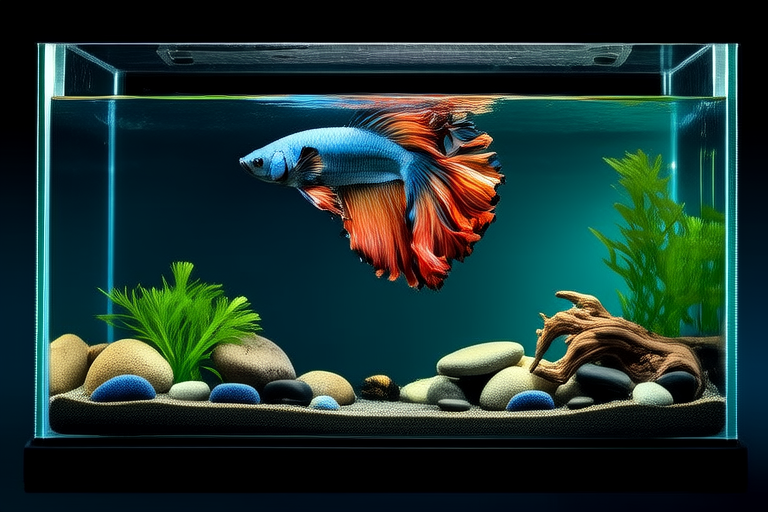
Unlocking the Secrets of Feeding Your Leopard Gecko Properly
Welcome to the fascinating world of leopard geckos! These captivating reptiles are popular among pet owners due to their docile nature and relatively low maintenance requirements. However, providing them with a balanced diet is crucial for their health and longevity. In this comprehensive guide, we will delve into the nutritional needs of leopard geckos, discuss the importance of gut loading feeder insects, provide a detailed feeding schedule for different life stages, and offer tips on recognizing overfeeding and underfeeding. Additionally, we’ll explore the role of hydration and calcium supplementation, and conclude with common feeding mistakes to avoid.
Nutritional Needs of Leopard Geckos
Leopard geckos require a well-balanced diet to thrive. Their primary food source is live insects, but they also need a variety of nutrients to maintain optimal health. Essential vitamins and minerals include calcium, vitamin D3, and various B vitamins. Calcium is particularly important for bone development and strength, while vitamin D3 aids in calcium absorption. Vitamin A is necessary for healthy skin and vision, and B vitamins support metabolism.
In addition to these key nutrients, leopard geckos need a diet rich in protein, fats, and carbohydrates. Protein is vital for muscle growth and repair, while fats provide energy and help with nutrient absorption. Carbohydrates, primarily from insects’ body mass, supply additional energy. Ensuring a diverse diet that meets these nutritional requirements is essential for your gecko’s overall health.
The Importance of Gut Loading Feeder Insects
Gut loading refers to the practice of feeding nutritious foods to insects before offering them to your leopard gecko. This process enhances the nutritional value of the insects, ensuring your gecko receives optimal nutrition. By gut loading, you can improve your gecko’s intake of essential vitamins and minerals, which can positively impact its health and longevity.
To gut load your feeder insects, feed them a high-quality commercial insect diet or create a DIY mix containing fruits, vegetables, and grains. Dust the insects with a calcium supplement containing vitamin D3 before feeding them to your gecko. This step ensures that your gecko receives the necessary nutrients for healthy growth and development.
Feeding Schedule for Different Life Stages
Hatchlings (0-4 months)
Newborn leopard geckos have tiny stomachs and require frequent feeding. Feed hatchlings small insects such as fruit flies, pinhead crickets, or termite workers every day. Gradually increase the size of the insects as the gecko grows. Aim to offer insects daily during the first month, then reduce to every other day after the first four months.
Juveniles (4-12 months)
As your gecko matures, it can handle larger prey items and fewer feedings. Juvenile geckos should be fed two to three times per week, depending on their activity level and appetite. Offer appropriately sized crickets, dubia roaches, or mealworms. Monitor their weight and adjust the feeding frequency accordingly.
Adults (over 12 months)
Adult leopard geckos require less frequent feeding compared to juveniles. Feed adult geckos once or twice a week, depending on their size and activity level. Offer a variety of insects, including crickets, dubia roaches, and waxworms. Avoid overfeeding, as obesity can lead to health issues. Always remove uneaten insects to prevent potential harm to your gecko.
Recognizing Overfeeding and Underfeeding
Overfeeding can lead to obesity, while underfeeding can result in malnutrition and stunted growth. To ensure your gecko is neither overfed nor underfed, monitor its weight and body condition regularly. A healthy leopard gecko has a visible waistline and a slightly rounded belly. If your gecko appears bloated or overweight, reduce the amount of food offered. Conversely, if your gecko looks thin or its ribs are visible, increase the frequency of feedings.
Another indicator of proper feeding is the gecko’s activity level. An underfed gecko may appear lethargic, while an overfed gecko may become sluggish. Adjust the feeding schedule based on your gecko’s behavior and physical appearance to maintain optimal health.
Maintaining Hydration Through Diet
Leopard geckos obtain most of their water needs through their diet. While it’s essential to provide a shallow water dish, many geckos prefer to drink droplets of water on the enclosure walls or plants. Gut loading feeder insects with moisture-rich foods like fresh fruits and vegetables can help maintain your gecko’s hydration levels. Additionally, lightly misting the enclosure occasionally can encourage drinking behavior.
The Role of Calcium Supplementation
Calcium supplementation is crucial for leopard geckos, especially during periods of rapid growth. Use a high-quality calcium powder containing vitamin D3 to dust your feeder insects. Feeders should be dusted with calcium at least twice a week for hatchlings and juveniles, and once a week for adults. Over-supplementation can lead to hypercalcemia, so follow the recommended dosing guidelines carefully.
Common Feeding Mistakes to Avoid
- Feeding inappropriate prey: Avoid offering wild-caught insects, as they may carry parasites or pesticides harmful to your gecko. Stick to commercially bred insects or those raised in clean environments.
- Overlooking gut loading: Neglecting to gut load your feeder insects can result in poor nutrition for your gecko. Always ensure your insects are well-fed before offering them as prey.
- Ignoring hydration: Dehydration can cause serious health issues. Regularly check your gecko’s water dish and consider misting the enclosure to encourage drinking behavior.
- Improper supplementation: Over-supplementing with calcium or vitamin D3 can lead to health problems. Follow the manufacturer’s instructions carefully and consult a veterinarian if unsure.
Further Learning Resources
To deepen your understanding of leopard gecko care, consider exploring reputable books, articles, and forums dedicated to reptile husbandry. Websites like Anapsid.org and Leopard Gecko Forum offer valuable information and community support. Additionally, attending local reptile expos or joining online groups can provide opportunities to learn from experienced breeders and owners.
By following the guidelines outlined in this article, you’ll be well-equipped to provide your leopard gecko with a balanced and nutritious diet. Remember, proper feeding is just one aspect of responsible reptile ownership. Regular veterinary check-ups, appropriate housing, and enrichment activities all contribute to your gecko’s overall well-being.



